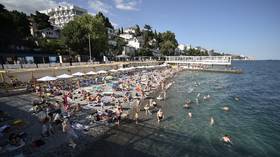'Phantom menace' superbug is becoming more common in the US – CDC

A dangerous, hard-to-detect superbug is on the rise, according to a report by the US Centers for Disease Control and Prevention. The bacterium, which scientists dubbed the “phantom menace,” is antibiotic-resistant.
The superbug belongs to the family of bacteria known as Carbapenem-resistant Enterobacteriaceae (CRE), which are dangerous because of their high mortality rates – killing up to 50 percent of infected patients in some instances – and resistance to antibiotics, the CDC said in a report released Thursday. Officials named CRE as one of the country's most urgent public health threats.
This CRE carries a plasmid – a mobile piece of DNA – with an enzyme that can break down certain antibiotics, which it can transfer to other bacteria in the body, the Washington Post reported, citing the CDC.
Interestingly enough, the “phantom menace” earned its name because it is actually less resistant to antibiotics than more common types of CRE. This made the superbug less of a target of scientific testing, allowing it to keep a low profile until now.
There was only one case of the superbug strain in 2010, but the number of infected shot up to 11 per year in 2013. The CDC reported at least 43 total patients contracted the “phantom menace” strain in 19 states between June 2010 and August 2015.
"This is a tricky drug-resistant bacteria, and it isn't easily found," CDC Director Thomas Frieden said in an interview with the Post. "What we're seeing is an assault by the microbes on the last bastion of antibiotics."
The number of cases is small but rising, Frieden said, warning that what has been detected so far could just be the "tip of the iceberg."
Antibiotic-resistant #superbug has spread to majority of US states – CDC http://t.co/8p1UmSS344pic.twitter.com/PKBmMg0hbT
— RT America (@RT_America) April 4, 2015














